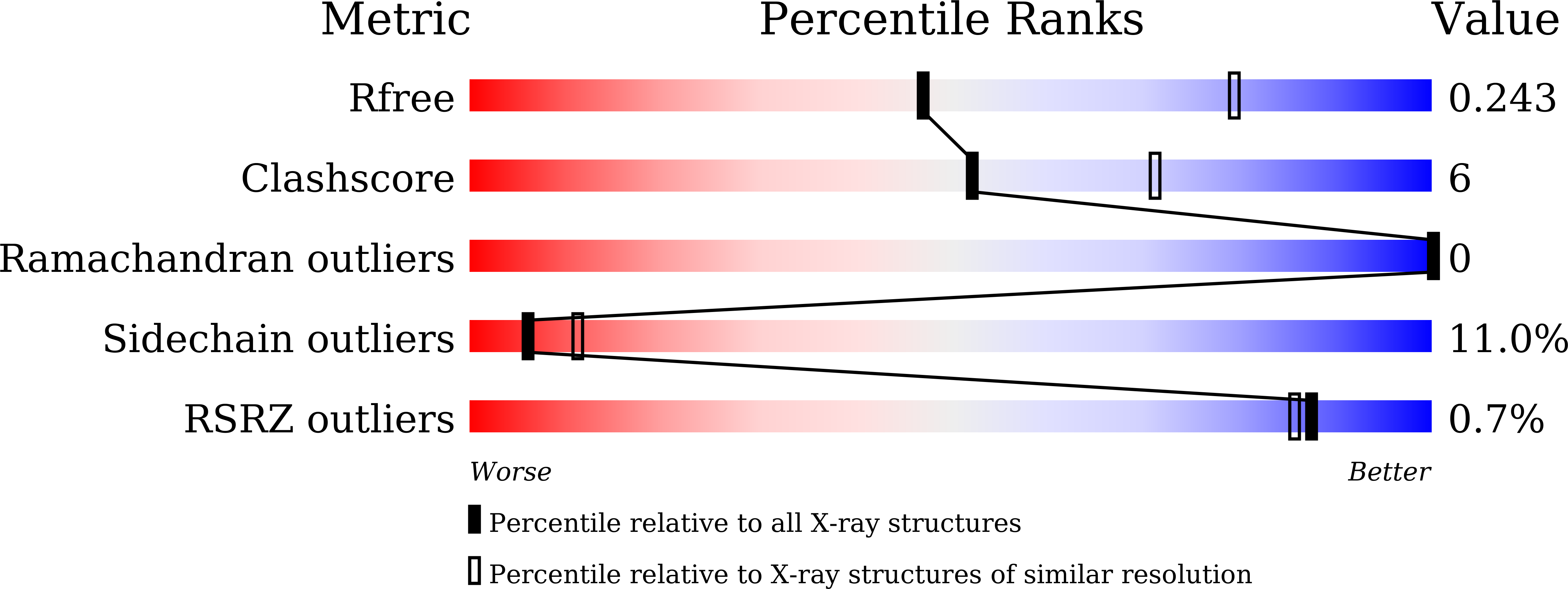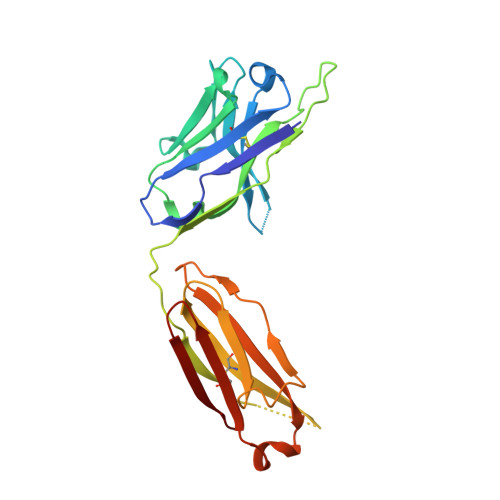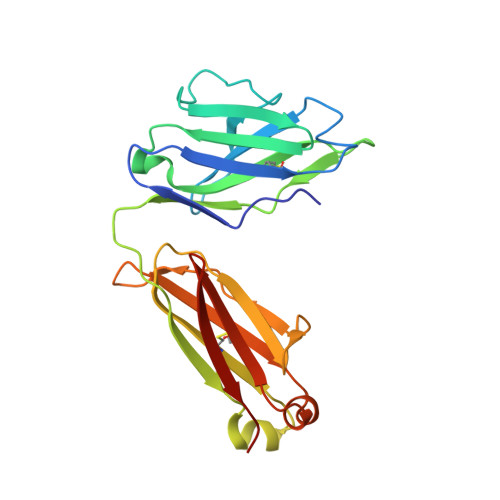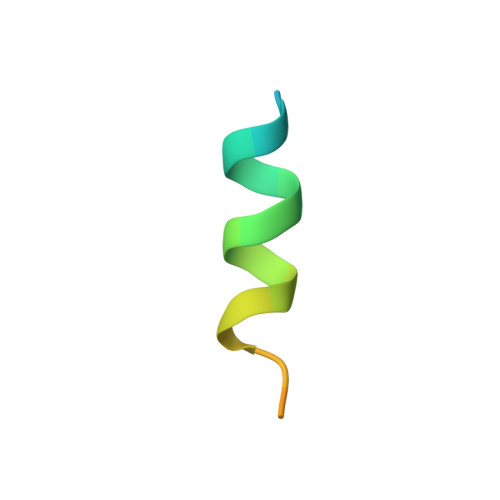Neutralization mechanism of a human antibody with pan-coronavirus reactivity including SARS-CoV-2.
Sun, X., Yi, C., Zhu, Y., Ding, L., Xia, S., Chen, X., Liu, M., Gu, C., Lu, X., Fu, Y., Chen, S., Zhang, T., Zhang, Y., Yang, Z., Ma, L., Gu, W., Hu, G., Du, S., Yan, R., Fu, W., Yuan, S., Qiu, C., Zhao, C., Zhang, X., He, Y., Qu, A., Zhou, X., Li, X., Wong, G., Deng, Q., Zhou, Q., Lu, H., Ling, Z., Ding, J., Lu, L., Xu, J., Xie, Y., Sun, B.(2022) Nat Microbiol 7: 1063-1074
- PubMed: 35773398
- DOI: https://doi.org/10.1038/s41564-022-01155-3
- Primary Citation of Related Structures:
7X9E - PubMed Abstract:
Frequent outbreaks of coronaviruses underscore the need for antivirals and vaccines that can counter a broad range of coronavirus types. We isolated a human antibody named 76E1 from a COVID-19 convalescent patient, and report that it has broad-range neutralizing activity against multiple α- and β-coronaviruses, including the SARS-CoV-2 variants. 76E1 also binds its epitope in peptides from γ- and δ-coronaviruses. 76E1 cross-protects against SARS-CoV-2 and HCoV-OC43 infection in both prophylactic and therapeutic murine animal models. Structural and functional studies revealed that 76E1 targets a unique epitope within the spike protein that comprises the highly conserved S2' site and the fusion peptide. The epitope that 76E1 binds is partially buried in the structure of the SARS-CoV-2 spike trimer in the prefusion state, but is exposed when the spike protein binds to ACE2. This observation suggests that 76E1 binds to the epitope at an intermediate state of the spike trimer during the transition from the prefusion to the postfusion state, thereby blocking membrane fusion and viral entry. We hope that the identification of this crucial epitope, which can be recognized by 76E1, will guide epitope-based design of next-generation pan-coronavirus vaccines and antivirals.
Organizational Affiliation:
State Key Laboratory of Cell Biology, Shanghai Institute of Biochemistry and Cell Biology, Center for Excellence in Molecular Cell Science, Chinese Academy of Sciences, University of Chinese Academy of Sciences, Shanghai, China.
















